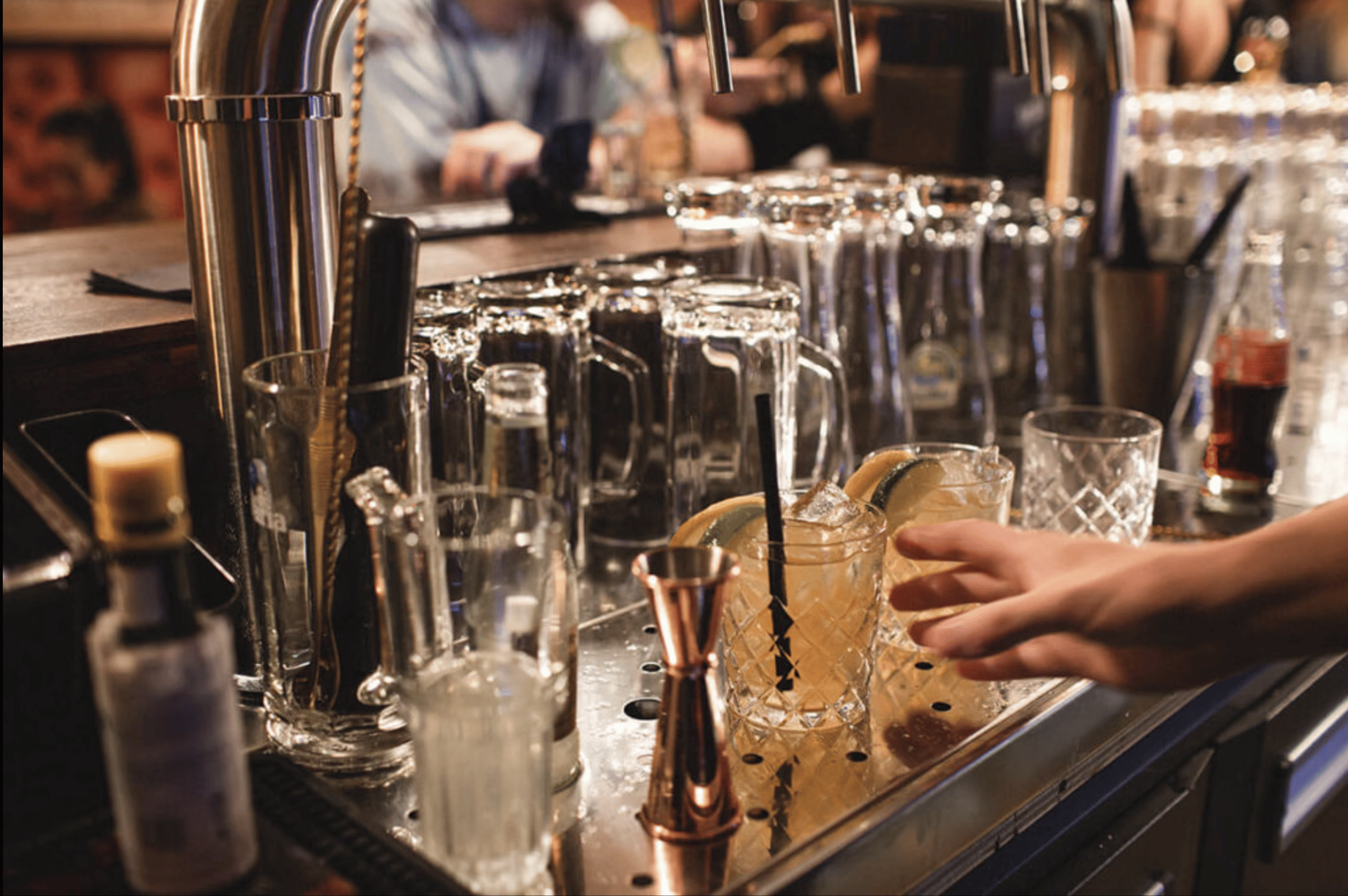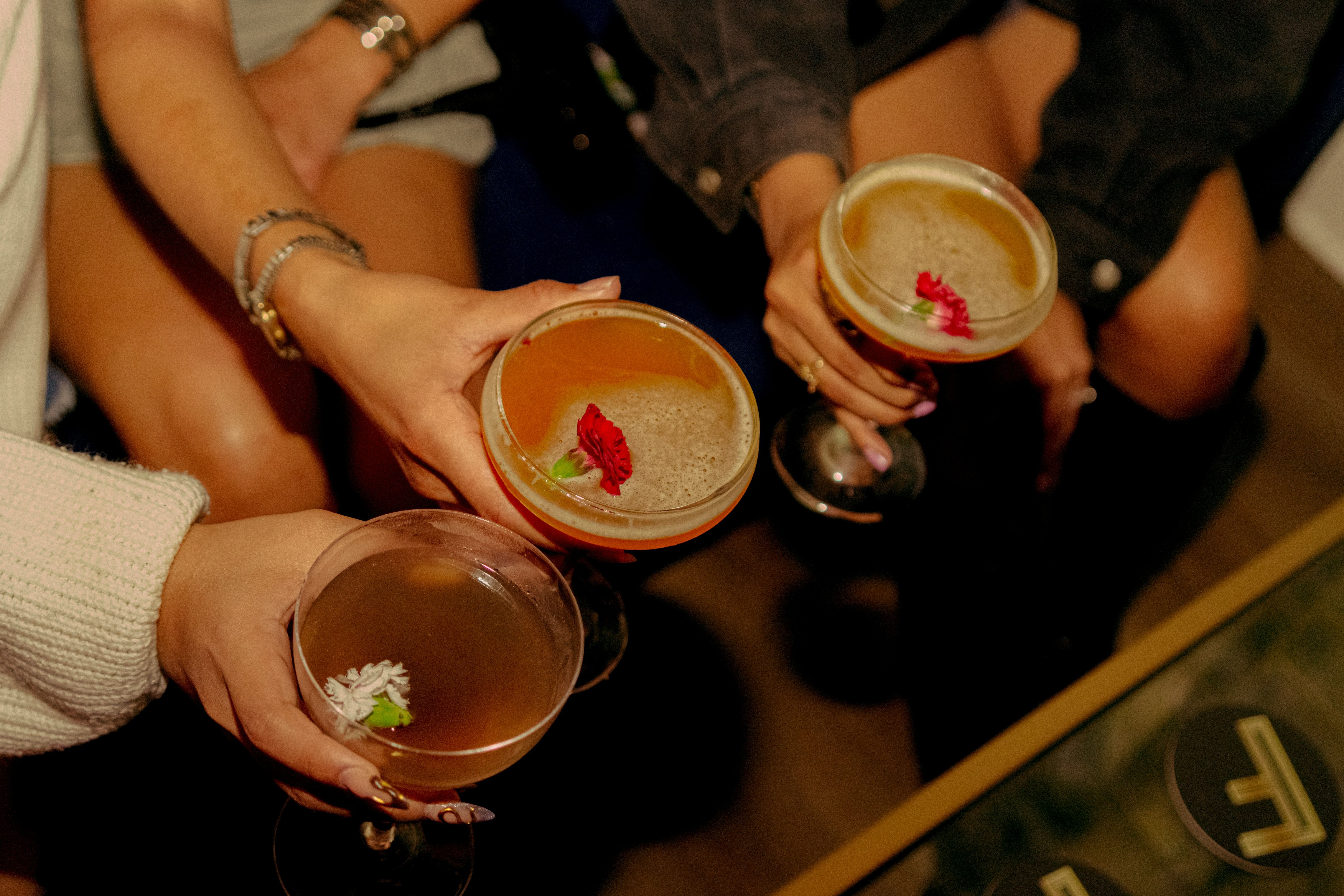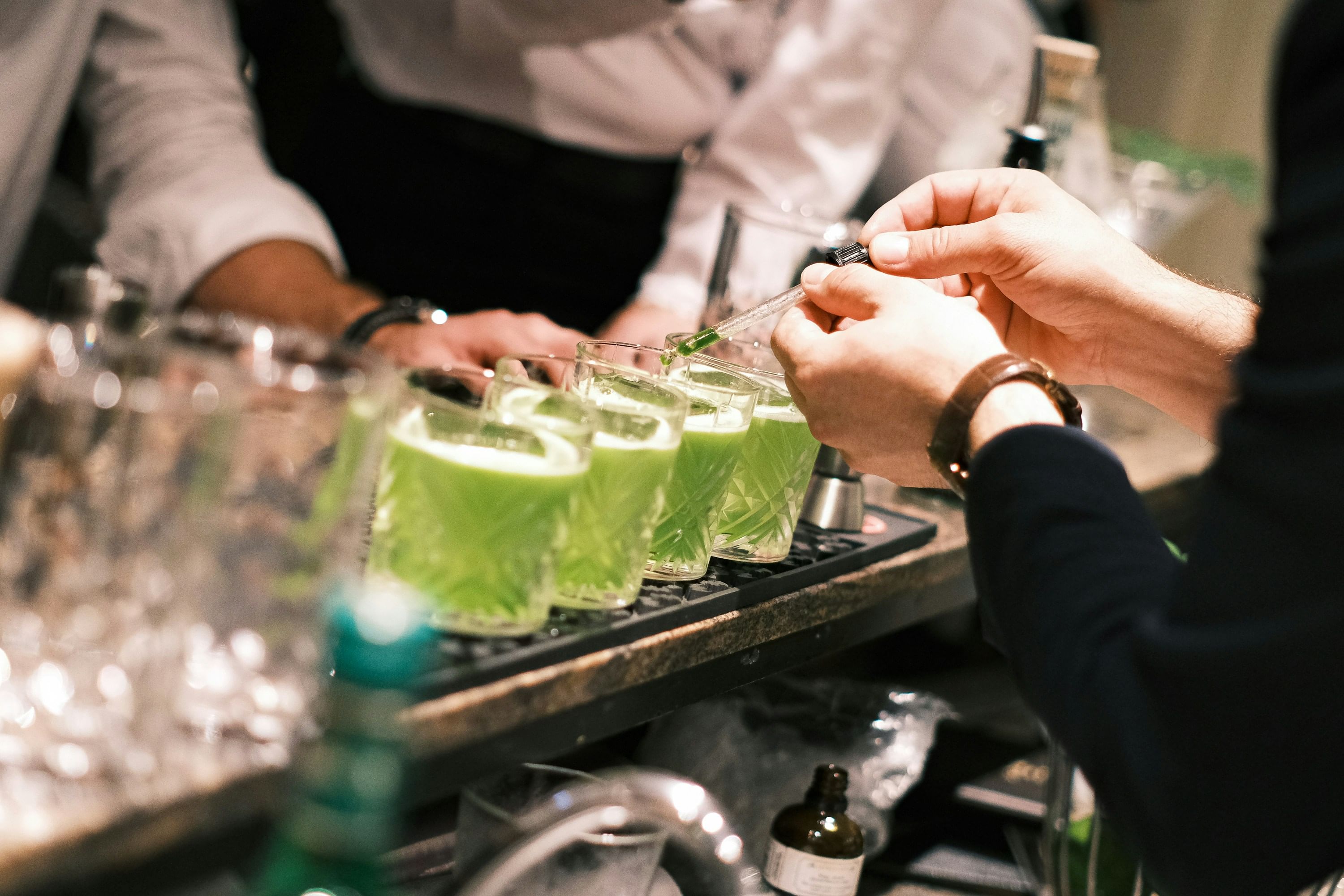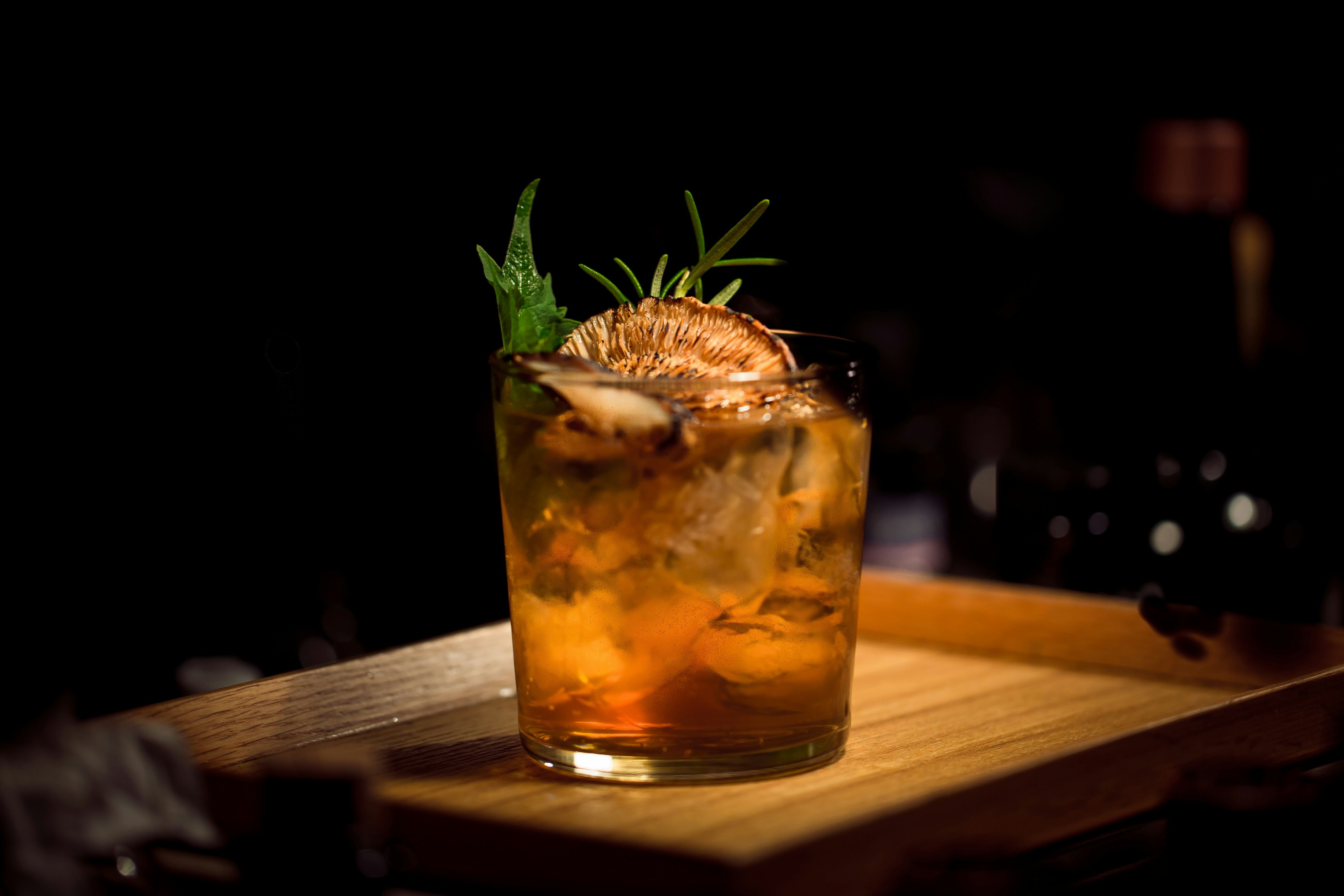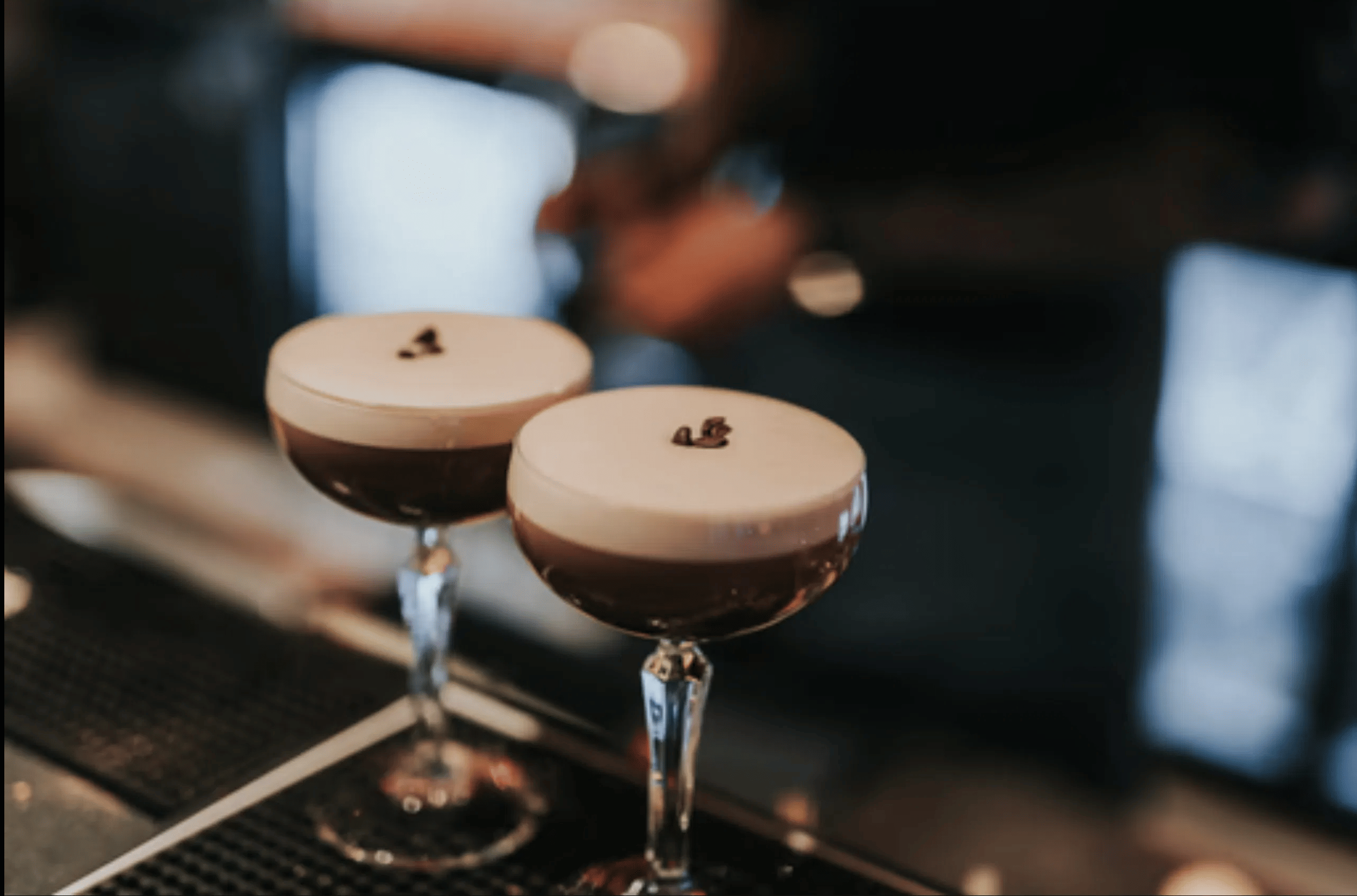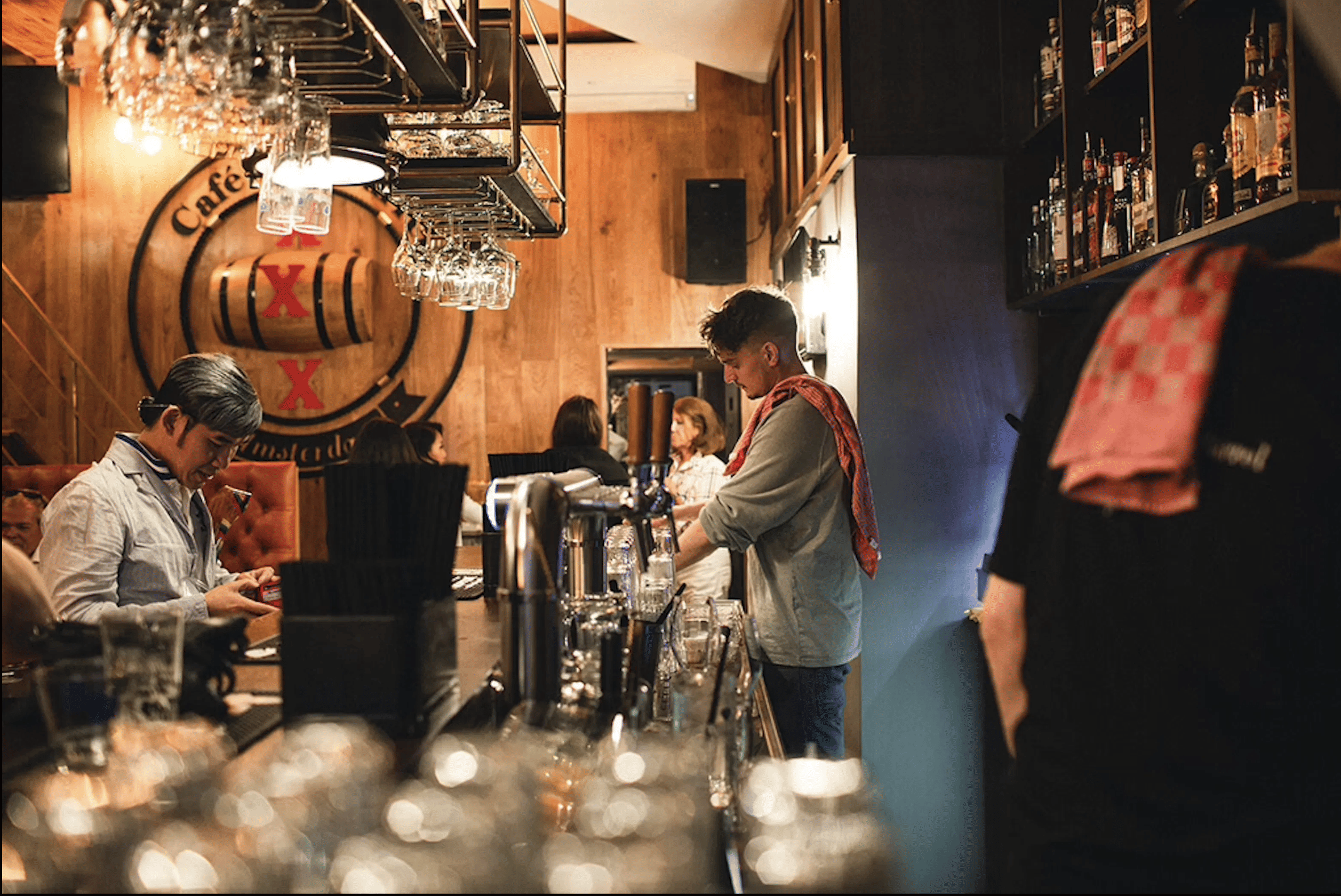Brown Café Cocktail Making Experience at Dam Square
Private cocktail workshop: Sit at your table by Dam Square. The bartender brings tools to you. Make a Dutch Mule, sip it. Make an Aperol Spritz, enjoy. Learn cocktails at your own pace in a cozy brown café.
Highlights
- 🍹 Make 2 cocktails (Dutch Mule + Aperol Spritz) at your own table
- 🪑 Korean BBQ-style: bartender brings everything to you, then leaves you alone
- ⏱️ Your pace: enjoy each drink as long as you want before making the next
- 📍 Prime location: 30 seconds from Dam Square in cozy brown café
- 👤 Solo-friendly: no forced group interaction, just you and your table
- 🪟 People-watching: windows overlooking Dam Square street life
- 🎓 Real instruction: bartender teaches proper technique at your table
- 🕐 Flexible timing: roughly 45 mins of instruction + your sipping time
The bartender comes to you — Korean BBQ style cocktail workshop
Forget standing in a crowded workshop or sharing bar space with strangers. This is cocktail-making at your own table, on your timeline, in a cozy brown café steps from Dam Square.
Here's how it works: You sit. The bartender brings everything to your table. You make your first cocktail under their guidance. They take the tools away. You sip your drink, watch Dam Square, relax. When you're ready for round two, signal the bartender. They return with fresh tools and ingredients. You make your second cocktail. They clear everything. You enjoy.
It's the Korean BBQ model applied to cocktails — the experience comes to you, you control the pace, and there's zero performance pressure. Just you, your table, two cocktails you'll make yourself, and genuine Amsterdam brown café atmosphere.
Why the Korean BBQ approach changes everything
Traditional cocktail workshops have a fundamental problem: they rush you. Everyone makes drinks simultaneously, sips on schedule, moves to the next one whether you're ready or not.
This format flips that completely:
- Your table, your territory: No sharing space, no crowding around a bar
- Your timeline: Make drink one, enjoy it for 5 minutes or 25 minutes — your call
- Your privacy: Solo travelers aren't awkwardly grouped with strangers
- Your pace: Ready for drink two immediately? Or want to people-watch first? You decide
- Your atmosphere: Sit facing the windows or tucked in a cozy corner
The bartender is your personal cocktail instructor who appears when needed and disappears when you want to just enjoy your creation. It's structured enough to learn properly, but relaxed enough to feel like you're just hanging out at a café that happens to teach you bartending.
The experience: two cocktails, your rhythm
Arrival & Setup (5 mins)
Walk into House of Stapel on Jonge Roelensteeg, 30 seconds from Dam Square. Tell the bartender you're here for the cocktail workshop. They'll seat you at your table — choose a spot by the windows overlooking Dam Square, or in the darker cozy interior if you prefer privacy.
No formal "class start time." This begins when you arrive and sit down.
The bartender brings you a welcome drink (small sip to settle in) and explains how this works:
"I'll bring everything you need to make a Dutch Mule. I'll show you the technique, guide you through making it, then leave you alone to enjoy it. When you're ready for the second cocktail, just wave me down or make eye contact. No rush — this is your time."
First Cocktail: Dutch Mule (15 mins instruction + your drinking time)
The bartender arrives at your table carrying a tray with everything:
- Dutch vodka bottle
- Fresh lime and lime juicer
- Ginger beer
- Fresh mint
- Ice bucket
- Jigger (measuring tool)
- Muddler
- Bar spoon
They set up a mini bar station right on your table. Then they teach you, step by step:
"First, we muddle the mint and lime..."
They demonstrate the proper technique — pressing, not smashing. Releasing oils without creating bitterness. Then you try it while they watch and correct: "A bit more pressure... perfect."
"Now we measure the vodka..."
They show you how to use the jigger properly. Pour to the line, not over. Why measuring matters even when you think you can eyeball it.
"Add ice, then ginger beer..."
The proper order matters. They explain why as you build the drink.
"Garnish with this mint sprig..."
Not just decoration — technique that matters. How to slap the mint to release aroma. Where to place it so it's functional, not just pretty.
Your Dutch Mule is complete. The bartender tastes it (optional) and confirms it's properly balanced. Then they collect all the tools and ingredients, clearing your table except for your finished cocktail.
"Enjoy that. When you're ready for the next one, just catch my eye."
They walk away. Now it's just you, your handmade Dutch Mule, and the brown café atmosphere.
Your Break: 5-30 Minutes (Completely Your Call)
This is the magic moment. You're not in a workshop anymore. You're just someone sitting in an Amsterdam café, sipping a cocktail you made yourself.
What people do during this time:
- Watch Dam Square foot traffic through the windows
- Scroll phone or text friends about what they're doing
- Journal or read
- Strike up conversation with the bartender or other patrons if feeling social
- Take photos of their drink, the café, the street
- Simply sit and think
- Order a snack from the menu (optional, separate purchase)
The bartender is nearby, working the bar, but not hovering. You're on your own timeline. Some people finish their Dutch Mule in 10 minutes and immediately signal for round two. Others nurse it for half an hour, enjoying the people-watching and the break from sightseeing.
There is zero pressure to move faster. This is priced for 45 minutes total, but if you want to stretch it to an hour because you're enjoying the first drink, that's completely fine.
Second Cocktail: Aperol Spritz (15 mins instruction + your drinking time)
When you're ready — truly ready, not when a schedule says — you signal the bartender. Eye contact, small wave, whatever feels natural.
They return to your table with a fresh tray:
- Prosecco bottle (chilled)
- Aperol bottle
- Soda water
- Fresh orange
- Ice
- Wine glass
- Bar spoon
- Knife and cutting board for orange
Another mini bar station appears on your table. They teach cocktail number two:
"This is Amsterdam's favorite drink, but most cafés make it wrong..."
They explain the proper 3-2-1 ratio (Prosecco-Aperol-soda) that locals insist upon. Why tourist versions are too sweet.
"Ice first, then Aperol..."
The building order that creates that Instagram-worthy ombré gradient. They demonstrate, then you replicate.
"Pour the Prosecco gently..."
How to add sparkling wine without losing all the bubbles. The angle matters. The speed matters.
"Stir exactly three times..."
Not five, not ten. Three gentle stirs. They explain why (preserving carbonation while mixing flavors).
"Now we cut the orange wheel..."
They show you the proper cut. Not a wedge (that's wrong), not a thick slice (also wrong), but a thin wheel. How to position it on the rim so it's functional and beautiful.
Your Aperol Spritz is complete, looking like it came from a professional bar. The bartender again clears all tools and ingredients, leaving just your finished cocktail.
"Enjoy. I'm around if you have any questions about Amsterdam bars or want recommendations."
They leave you alone again. Now you have a second self-made cocktail, the techniques still fresh in your mind, and more time to simply exist in this cozy brown café.
Your Second Break: As Long As You Want
Sip your Aperol Spritz. Reflect on what you learned. Compare the two techniques (muddling vs. building, shaking vs. stirring).
Many people use this time to:
- Take more photos (the Aperol Spritz is extremely photogenic)
- Ask the bartender questions when they pass by naturally
- Order food from the menu and turn this into a light meal
- Plan their next Amsterdam activity
- Just decompress from tourist mode
When you finish your drink, you're done. No formal wrap-up, no group goodbye. Just leave when you're ready, or stay longer and order something else at regular menu prices.
The setting: House of Stapel brown café
This experience works because of where it happens. House of Stapel isn't a sleek cocktail bar or hotel event space — it's a genuine Amsterdam brown café:
- Dark wood interiors, warm lighting, cozy atmosphere
- Windows overlooking the constant flow of Dam Square tourists and locals
- Frequented by neighborhood regulars, not just tourists
- Food and drink menu available
The Korean BBQ-style format works perfectly here because it's already a café where people sit for hours. You're not disrupting a "class" — you're just a customer who happens to be learning cocktails at your own table while everyone else does their own thing.
Who loves this format
This appeals to specific traveler types:
- Solo travelers who hate forced group socializing — this is genuinely solo-friendly
- Couples who want to learn together without a crowd — it's just you two at your table
- People who hate being rushed — control your own timeline completely
- Dam Square people-watchers — learn cocktails while watching Amsterdam go by
- Anyone between activities — this fits perfectly into sightseeing flow
- Flexible schedulers — no fixed start times, just show up
The common thread: appreciation for structure (you're still learning properly) without rigidity (you control the pace).
Timing that fits your Amsterdam day
- Available: Friday, Saturday, Sunday
- Sessions: 12:40 | 13:10 | 16:00
But here's the key difference from traditional workshops: these times are when you arrive and sit down, not when everyone simultaneously starts. The person at 12:40 might still be sipping their first drink when the 13:10 person walks in and begins. Everyone's on their own timeline.
12:40 session:
Post-lunch activity, pre-afternoon sightseeing
13:10 session:
Slightly later start for relaxed mornings
16:00 session:
Perfect golden hour timing, transitions into evening
At roughly 45 minutes for the actual instruction (split across two cocktails) plus however long you want to sip, this fits beautifully into any Amsterdam itinerary. It's not a 2-hour commitment you need to plan around — it's a flexible break that adapts to your energy and schedule.


